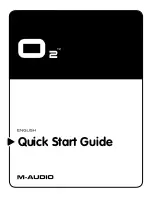
PSR-OR700 Owner’s Manual
183
Appendix
Appendix
Troubleshooting
The instrument does not turn on.
• Securely insert the female plug into the socket on the
instrument, and the male plug into a proper AC outlet.
A click or pop is heard when the power is turned on
or off.
• Electrical current is being applied to the instrument. This
is normal.
Noise is heard from the instrument’s speakers.
• Noise may be heard if a mobile phone is used near the
instrument or if the phone is ringing. Turn off the mobile
phone, or use it further away from the instrument.
The letters in the display cannot be read, because the
display is too bright (or dark).
• Use the [LCD CONTRAST] knob to adjust for optimum
visibility.
• Adjust the brightness of the display (page 20).
The overall volume is too low, or, no sound is heard.
• The master volume may be set too low. Set it to an
appropriate level with the [MASTER VOLUME] dial.
• All keyboard parts are set to off. Use the PART ON/OFF
[RIGHT 1]/[RIGHT 2]/[LEFT] button to turn it on.
• The volume of the individual parts may be set too low.
Raise the volume in the BALANCE display (page 41).
• Make sure the desired channel is set to ON (page 105).
• Headphones are connected, disabling the speaker out-
put. Unplug the headphones.
• The [FADE IN/OUT] button is on, muting the sound.
Press the [FADE IN/OUT] button to turn the function off.
• Make sure the Local Control function is set to ON
Not all simultaneously played notes sound.
• You are probably exceeding the maximum polyphony
(page 187) of the instrument. When the maximum
polyphony is exceeded, the earliest played notes will
stop sounding, letting the latest played notes sound.
The keyboard volume is lower than the Song/Style
playback volume.
• The volume of the keyboard parts may be set too low.
Raise the volume in the BALANCE display (page 41).
Keys do not sound at the proper pitch.
• Make sure the Performance Assistant function is off on
the operation display (page 44).
Certain notes sound at the wrong pitch.
The Scale parameter has probably been set to some-
thing other than “Equal,” changing the tuning system of
the keyboard. Make sure “Equal” is selected as the
Scale in the Scale Tune display (page 99).
– There is a slight difference in sound quality among
different notes played on the keyboard.
– Some Voices have a looping sound.
– Some noise or vibrato is noticeable at higher
pitches, depending upon the voice.
• This is normal and is a result of the instrument’s sam-
pling system.
Some Voices will jump an octave in pitch when played
in the upper or lower registers.
• This is normal. Some voices have a pitch limit which,
when reached, causes this type of pitch shift.
The Main display does not appear even when turning
the power on.
• This may occur if a USB storage device has been
installed to the instrument. Installation of some USB stor-
age device may result a long interval between turning
the power on and appearance of the Main display. To
avoid this, turn the power on after disconnecting the
device.
Some characters of the file/folder name are garbled.
• The language settings have been changed. Set the appro-
priate language for the file/folder name (page 19).
An existing file is not shown.
• The file extension (.MID, etc.) may have been changed
or deleted. Manually rename the file, adding the appro-
priate extension, on a computer.
The data contained in the USB storage device is not
shown on the instrument itself.
• Data files with names of more than 50 characters cannot
be handled by the instrument. Rename the file, reducing
the number of characters to 50 or less.
How can I stop the demo?
• Press the [EXIT] button.
Overall
Files/Folders
Demo














































